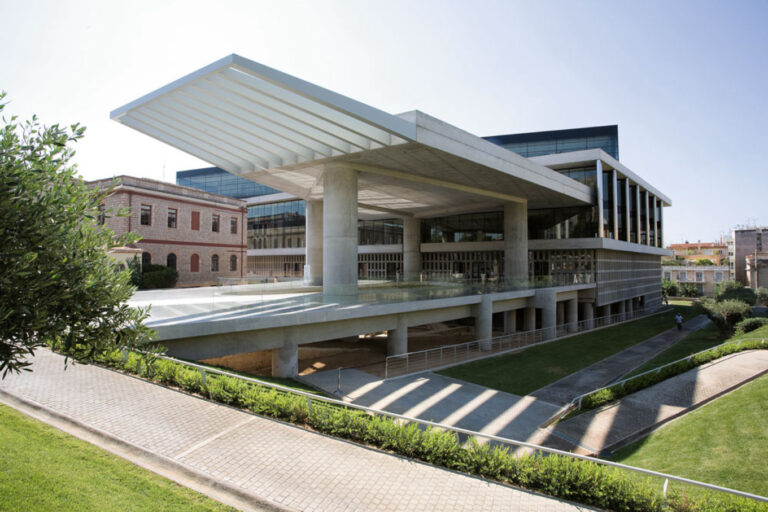
You are using the Free Edition of AthensAPP. For extensive information on Athens, GO PRIME with our comprehensive Greek Travel App featuring the full edition of Athens and 25 Greek islands.
The Acropolis Museum is an impressive archaeological museum located in Athens, Greece. It was designed by the Swiss architect Bernard Tschumi and opened in 2009. The museum is situated near the Acropolis of Athens, which is a UNESCO World Heritage Site and a significant landmark in Greece.
The Acropolis Museum is dedicated to showcasing the history and culture of the Acropolis and its surrounding area. It contains a vast collection of artifacts, including sculptures, friezes, and architectural fragments, dating back to ancient Greece. The museum is spread over three levels and covers an area of around 25,000 square meters.
One of the most notable exhibits at the Acropolis Museum is the Parthenon frieze, which is located on the top floor of the museum. The frieze is a 160-meter-long sculpture that adorned the Parthenon temple on the Acropolis. The museum has recreated the frieze with plaster casts, and the original frieze is on display in the British Museum in London. The museum also houses the Caryatids, which are female sculptures that supported the Erechtheion temple on the Acropolis.
The architecture of the Acropolis Museum is designed to reflect the importance of the Acropolis and its cultural significance to Greece. The building is made of concrete, glass, and steel, and features natural light to showcase the exhibits. The museum’s design incorporates ancient Greek elements, such as the use of columns and the use of light and shadow to create a sense of drama.
One of the unique features of the Acropolis Museum is the glass floor that covers the archaeological excavations beneath the museum. Visitors can view the ruins of an ancient Athenian neighborhood, including houses, streets, and workshops, dating back to the 5th century BCE. The museum’s location also provides a stunning view of the Acropolis from the third-floor terrace.
In conclusion, the Acropolis Museum is a significant cultural institution in Athens, Greece. It provides visitors with a unique insight into the history and culture of ancient Greece, showcasing a vast collection of artifacts and architectural elements from the Acropolis and its surrounding area. The museum’s architecture and design pay tribute to the importance of the Acropolis to Greek culture, and the glass floor showcasing the archaeological excavations beneath the museum is a testament to its commitment to preserving and sharing this cultural heritage.
Sorry, no records were found. Please adjust your search criteria and try again.
Sorry, unable to load the Maps API.
